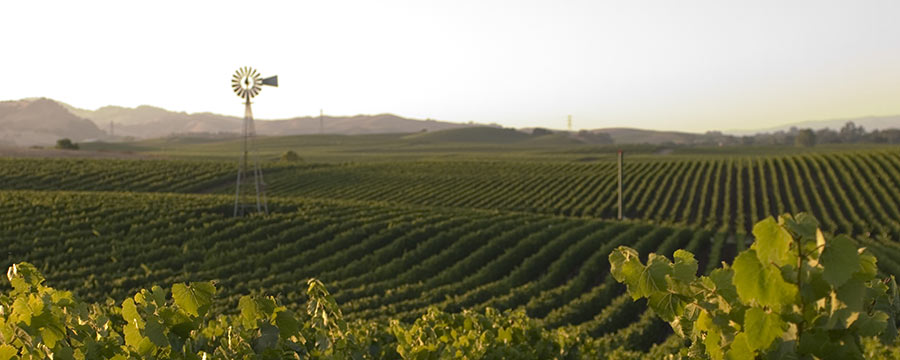
Napa County has more than 444,000 acres of land under permanent or high levels of protection from development.
Throughout our history, vintners in the Napa Valley have set the highest standard of land use and management designed to preserve our agricultural heritage and way of life. Building on our history of sustainability, vintners continue to demonstrate environmental leadership through programs such as Napa Green Certified Vineyard and Napa Green Certified Winery.
Napa Valley's environmental leadership story begins in 1968, when Napa Valley vintners and others in the community had the forethought to preserve open space and prevent future over-development by enacting the nation's first Agriculture Preserve. This land-zoning ordinance established agriculture and open space as the best use for the land in the fertile valley and foothill areas of Napa County. Initially the ordinance protected 23,000 acres of agricultural land stretching from Napa in the south to Calistoga. Today, more than 32,000 acres are contained within the Preserve.
If the act hadn't succeeded, there's little doubt that Napa Valley would have gone the way of Santa Clara Valley, which was called the Valley of Heart's Delight for its orchards and vines long before it became a symbol for technology and urban development. Without the Ag Preserve, a major divided highway would run through what are now some of the world's finest vineyards, and Yountville, St. Helena and Calistoga would most likely be a sea of housing development and their quaint downtowns would be bypassed and largely unused.
For more information about the Napa Valley Agricultural Preserve and how it defines land use in Napa Valley, view the video below and read this Napa Register newspaper article written to commemorate the initiative's 40th anniversary in 2008.
Beyond the protection of the valley floor, the county also designated a huge area as Agriculture, Watershed and Open Space (AW zoning), which is also protected, and in some ways, even more so. Recognizing the threats of erosion that hillside and valley floor vineyard development could pose to Napa's watersheds, in 1991 Napa County enacted comprehensive and rigorous conservation ordinances that regulated hillside development and ensured that vineyards had ample setbacks from streams. These ordinances further protected Napa Valley from development pressure, and in 2012 The Greenbelt Alliance announced that "Napa County has more than 444,000 acres of land under permanent or high levels of protection from development."
Understanding the importance of keeping rural lands rural, the Land Trust of Napa County was established in 1976 and created conservation easements for land owners to preserve and protect their land in perpetuity from development. Today, more than 89,000 acres, roughly 16% of Napa County, is protected.
In 1980, Napa County voters passed Slow Growth Initiative Measure A, which required that the Napa County General Plan adopt a Growth Management System that limited growth in Napa County to no more than 1% per year. This measure, which protects against sprawl and encroachment into ag land, is still in effect today.
By 1990, there were more than 200 wineries in the Napa Valley. As the wine industry continued to grow, it became apparent that clear definitions of what a winery was and what it wasn't were needed. Can a winery have its own on site restaurant? What about weddings and music festivals? That year, the Napa County Board of Supervisors adopted the Winery Definition Ordinance, which clearly defined and limited winery construction and activities in keeping with the land use regulations designed to protect Napa County for agricultural use.
Taking environmental leadership to an even higher level, the Napa Valley Vintners worked with more than 20 industry and environmental stakeholder groups, as well as local, state and federal regulators to help create the Napa Green Certified programs. Now its own, independent non-profit, Napa Green serves as a catalyst and facilitator to grow certified sustainable, responsible businesses committed to the environmental stewardship. This voluntary, environmental certification program for Napa County vineyards and wineries is focused on climate action, social equity, resource conservation and enhancing operational efficiency.